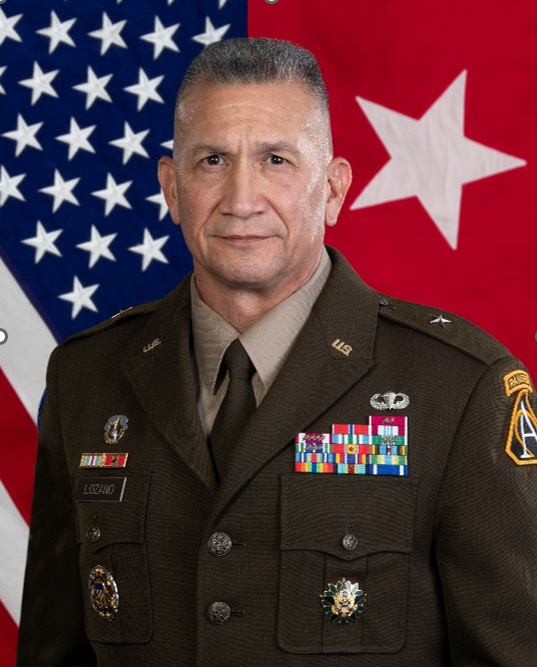The Army’s contribution to the Trump administration’s “Golden Dome for America” missile defense project will include looking at artificial intelligence-driven capabilities to enable remote operations and reduce the architecture’s manpower requirements, a senior official said Monday.
Maj. Gen. Frank Lozano, program executive officer for missile and space, said the Army is “infancy” of thinking through and defining how it will approach the autonomous piece of Golden Dome.

“What we’ve really been asked to consider as an Army contribution to Golden Dome for America is what can we provide from a next-generation capability in the terminal defense space. And in that space, it’s less about the specific capability outcome we’re trying to achieve and really, right now, more focused on how do we go about performing that function in a different way,” Lozano said in remarks at the Fires Symposium in Lawton, Oklahoma.
Trump in late January signed an executive order to pursue the massive, likely multi-billion dollar Golden Dome project, originally called “Iron Dome For America,” envisioning a “next-generation missile defense shield” that will utilize space-based interceptors (Defense Daily, Jan. 28).
Golden Dome for America is intended to defend against ballistic, hypersonic and cruise missile threats and other advanced aerial attacks, according to the executive order, which the White House said “remains the most catastrophic threat facing the United States.”
“Whether it’s a [directed energy] solution, whether it’s an electronic warfare solution, whether it’s a kinetic solution, whether it’s a mid-course solution or a space-based solution, we have to think about doing business differently to counter the mass array of threats that might likely be realized in that type of scenario when we talk about Golden Dome for America,” Lozano said.
Lozano said the Army is working now on the concepts and “envisioned outcomes” required for Golden Dome, to include exploring how to bring in more remotely-operated and autonomous capabilities.
“You have to understand [those] decisions that can be made by AI-enabled algorithms and you have to understand decisions that have to be made by a human. And you have to define those to at least a certain extent so that there’s a common understanding between this community of what outcomes are acceptable to the American public,” Lozano said. “Think about an architecture that’s maybe set up around Los Angeles, set up around San Francisco, set up around Seattle, controlled by a central hub in Nellis Air Force Base in Las Vegas. [There would be] very few touch points at those locations but those remote locations have to be operable 99.9 percent of the time. We usually don’t design that into our systems. But we’re going to have to think hard about those systems and how we achieve those certain levels of reliability.”
Part of the focus on bringing in more autonomy is aimed at addressing how the Army’s “constrained force structure” can commit to the Golden Dome effort, according to Lozano.
“There are only so many soldiers within the Army. So when you talk about defending sites from a terminal perspective, we’ve really got to be focused on minimal manpower,” Lozano said.
The Missile Defense Agency last week announced a new Multiple Authority Announcement (MAA) vehicle to let the DoD quickly pursue non-traditional acquisitions under one announcement, as it looks to support the Golden Dome initiative (Defense Daily, March 31).
